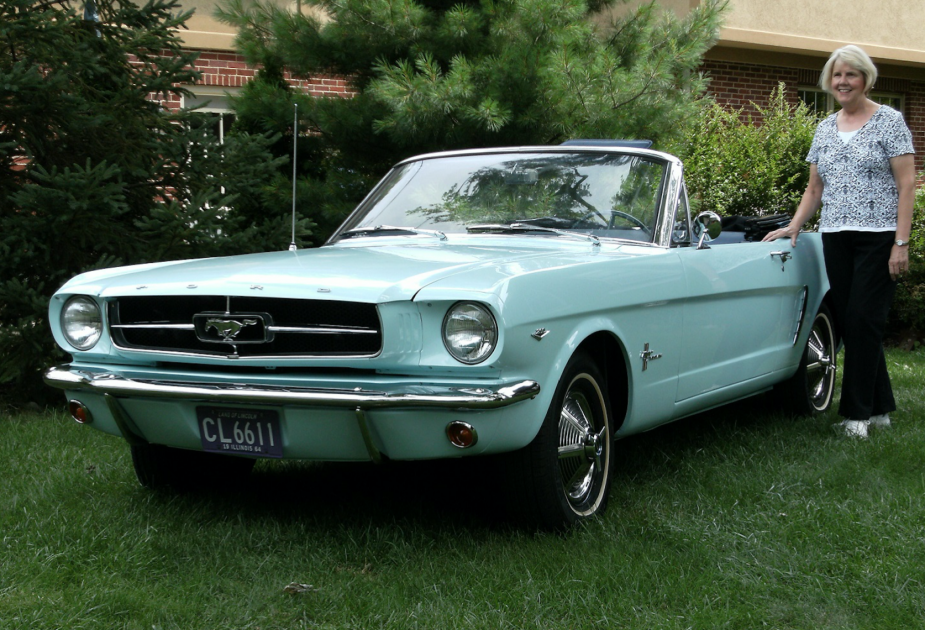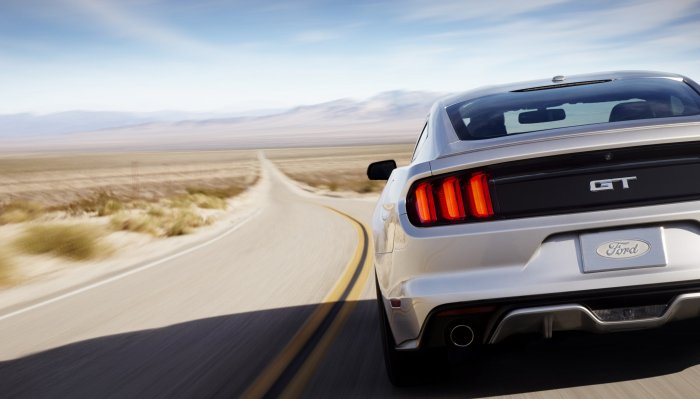
The Very First Mustang: Celebrating Restoration and Reinvention on Ford Mustang Day
The hype surrounding the Ford Mustang prior to its launch in 1964 was unlike anything Ford had experienced previously. The public had been able to view the concept vehicle as numerous pictures had circulated in the worldwide press that led to thousands of letters pouring in from across the globe, wanting to know if Ford was really going to build this dream machine. This in turn created the opportunity for Ford’s very first International Press Introduction of an automobile on April 13, 1964. The event was broadcast to eleven European capitals and covered by over 2,000 reporters.
Ford Executive Lee Iacocca, who spearheaded the development of the Mustang, introduced the Mustang as a new line for Ford, with versatility as its key attribute. The Mustang was to be an economical compact car with the style of an expensive European car, however customers could also opt for high performance – the muscle car as we know it today.
“We don’t claim the Mustang is a universal car, or that it can be all things to all people,” Iacocca told the press. “But we do believe the Mustang will be more things to more people than any other automobile on the road…We like to think that in the process we have achieved a new dimension in American motoring – perhaps in world motoring.”
Four days later, on April 17, 1964, the Mustang went on sale to the public and the demand and the hype for the new car from Ford skyrocketed. On its first day of sale, Ford sold over 22,000 Mustangs. In the first year of sale, Ford sold 418,810 Mustangs. In two years, there would be more than a million Ford Mustangs on the road.
The First One
In 1964, 22-year-old Gail Brown was touring the showroom floor at Johnson Ford in Chicago with her parents, looking for a car of her own. An elementary school teacher, Brown had been using her mother’s 1957 Ford Fairlane convertible to get to work. However, nothing on the showroom floor took her fancy. She confessed this to the salesman, who took her to the storeroom where, still under a cover, sat a new Skylight Blue 1965 Ford Mustang Convertible.
Brown had found her car and, after borrowing some money from her parents, she bought the Mustang for US$3,419, becoming the first known retail buyer of what would go on to become an American icon. What makes Brown’s story special is that, not only is she considered the first person to buy a production Mustang, but that the Skylight Blue Mustang is still in Brown’s family. In 1966, she married long-time sweetheart Tom Wise and the two settled down in Chicago and started a family. However, in 1979, after 15 years of Chicago winters, and everything Tom and Gail’s four children could throw at it, the Mustang was showing its age, and after the battery was stolen, the Mustang was placed inside the garage where it was to stay for the next 27 years.
Throughout the following years, Wise swore that one day he would restore it to its former glory. Then, in 2007, he got to work, pulling the Mustang out of the garage and, over the course of the next three years, he removed all the rust, repainted the body, put on a new convertible top, and repaired all the electrics. The Wise family Mustang was back on the road. And now, more than 50 years later, they still drive it today.
The Extreme One
The Wise’s Mustang isn’t the only mid-‘60s Ford pony car still kicking about. Albeit tuned generously, and modified handsomely, professional rally driver and Gymkhana legend, Ken Block, took the 1965 Ford Mustang notchback as the base for his “Hoonicorn RTR”, which, with 4.7-litre Roush Yates V8 producing 485 hp, is a far cry from the 164 hp 4.2-litre V8 engine of a Chicago schoolteacher in 1964.
Block’s unique, one-of-a-kind, world’s first all-wheel drive 1965 Ford Mustang notchback features a six-speed Sadev SC90-24 all-wheel drive transmission with a hydraulic handbrake system, a custom ASD Motorsports-designed geometry and components suspension system, and 18-inch wheels. Since being unveiling in 2014, the Hoonicorn Mustang has become a star in its own right, alongside drifting superstar Block, in the Gymkhana series – the most recent of which saw the modified Mustang let loose in the world’s richest playground, Dubai.
The Young One
If Wise was to walk onto a Ford lot today, she’d see a clear lineage to Mustang’s easily-recognisable heritage. The 2016 Mustang GT with its 5.0-litre V8 engine pumping out 435 hp features the return of hood vent-integrated turn signals, something fans have been clamouring for a return to for years, influencing Ford to bring back the popular feature as standard equipment on the 2016 Mustang GT.
New colour options make Mustang more personal than ever, with over-the-top racing stripes and black roof panel offering, while added features like SYNC 3 with conversational voice recognition, smartphone-like touch screen, and intuitive graphical interface prove that the old certainly does mesh beautiful with the new.
The UAE accounted for more than half (1,058) of the 1,785 new Mustangs sold in the Middle East in 2015, while Ford’s famous pony car’s star continues to burn brightly throughout the region, a fact reflected by the number of appreciation clubs in the GCC, with around 10– such as Emirates Mustang Club, Mustang Club KSA, and Oman’s Muscatstangs – often coming together to celebrate all things Mustang.
An American Icon
The Mustang has been in uninterrupted production since 1964, but the Mustang of today is not the same as the one sitting under cover in the storeroom of Johnson Ford in Chicago. Ford only expected to sell about 100,000 Mustangs in its first year. But they sold more than 400,000. Its popularity was such that it inspired its own class of car, the “pony car”. These were cars with long bonnets and short rear decks. Pony cars were compact, sporty, stylish, and had big engines. Other manufacturers took note, and a craze was born. And while pony cars dropped in popularity in the ‘80s and ’90, the 2005 Mustang reignited the trend that continues with the all new Mustang launched in 2015.
The Mustang of today is not based on a concept, but a 52-year-old legacy and is considered one of the greatest automotive success stories of all time. Since Iacocca’s speech at the World Fair in New York, more than 8.7 million Mustangs have been sold globally. A new dimension in world motoring indeed.




























